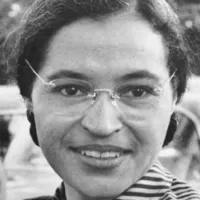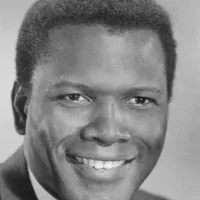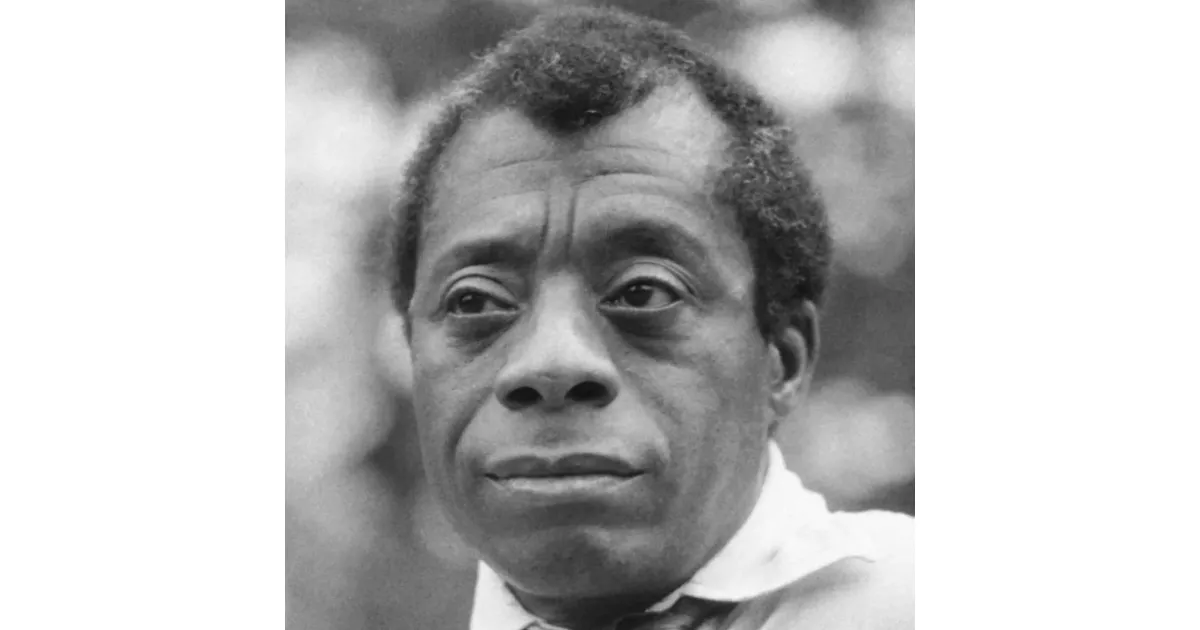James Baldwin was a prominent African-American writer and civil rights activist. Known for his eloquent prose and insightful social commentary, Baldwin's essays, novels, and plays explored themes of race, sexuality, class, and identity in America. His works like "Go Tell It on the Mountain" and "Notes of a Native Son" solidified his place as a major literary figure and a powerful voice during the Civil Rights Movement. Baldwin challenged societal norms and confronted the complexities of the American experience, leaving a lasting impact on literature and the fight for social justice.
1903: Emma Berdis Jones's Birth
In 1903, Emma Berdis Jones, James Baldwin's mother, was born on Deal Island, Maryland. She later fled racial segregation and discrimination in the South during the Great Migration.
1916: Reference to James Joyce's A Portrait of the Artist as a Young Man
In 1916, James Joyce's "A Portrait of the Artist as a Young Man" was published, and Baldwin's biographer draws parallels between this book and Baldwin's "Go Tell It on the Mountain".
1919: David Baldwin moved to Harlem
In 1919, David Baldwin left the South for Harlem.
August 2, 1924: James Baldwin's Birth
On August 2, 1924, James Arthur Baldwin, born James Arthur Jones, was born in Harlem, New York City. He would later become a renowned African-American writer and civil rights activist.
1927: Emma Berdis Jones's Marriage to David Baldwin
In 1927, Emma Berdis Jones married David Baldwin, a laborer and Baptist preacher, who became James Baldwin's stepfather.
1937: Baldwin joined Mount Calvary of the Pentecostal Faith Church
In 1937, feeling uncomfortable with his attraction to men, Baldwin sought refuge in religion and joined the Mount Calvary of the Pentecostal Faith Church.
1937: Baldwin's First Published Essay
In the autumn of 1937, Baldwin's first published essay, "Harlem—Then and Now", appeared in the Douglass Pilot, after research at the library on 42nd Street.
1938: Baldwin graduated from Frederick Douglass Junior High
In 1938, Baldwin graduated from Frederick Douglass Junior High School.
1938: Baldwin's Acceptance to De Witt Clinton High School
In 1938, Baldwin was accepted at De Witt Clinton High School in the Bronx, where he matriculated that fall.
1938: Baldwin's first attempt at a novel
In 1938, James Baldwin made his first attempt at writing a novel, marking the beginning of years of work that would eventually lead to "Go Tell It on the Mountain".
1940: Wright's Native Son published
Richard Wright's novel "Native Son" was published in 1940. Later, James Baldwin's essay "Notes of a Native Son" and his collection Notes of a Native Son allude to it.
1941: Baldwin Completed His High School Diploma
In 1941, Baldwin completed his high school diploma at De Witt Clinton.
1941: Baldwin Delivered His Final Sermon
In 1941, Baldwin delivered his final sermon at Fireside Pentecostal, realizing his authority as a speaker. He also had a conversation with David Baldwin about his desire to write rather than preach.
1941: Baldwin left school to support his family
In 1941, Baldwin left school in order to earn money to help support his family. He secured a job helping to build a United States Army depot in New Jersey.
1942: Baldwin worked laying tracks for the military
In 1942, Emile Capouya helped Baldwin get a job laying tracks for the military in Belle Mead, New Jersey. Baldwin experienced prejudice that angered him.
June 1943: Baldwin returned to Harlem after losing his track-laying job
In June 1943, Baldwin returned to Harlem to live with his family after being fired from the track-laying job, and then losing a meat-packing job too. He became unstable and had his first nervous breakdown.
1943: Lucien Carr Murders David Kammerer
In 1943, Columbia University undergraduate Lucien Carr murdered David Kammerer near the Hudson River after Kammerer made sexual advances. This event later inspired the murder plot in Baldwin's novel "Giovanni's Room".
1943: David Baldwin's Death and Funeral
In 1943, David Baldwin, James Baldwin's stepfather, was committed to a mental asylum and died of tuberculosis on July 29. His funeral was held on James Baldwin's 19th birthday, around the time the Harlem riot began. James visited him the day before, and wrote about him in his essay "Notes of a Native Son".
1944: Baldwin Met Marlon Brando
In 1944, Baldwin met Marlon Brando at a theater class at The New School, and the two became fast friends.
1944: Lucien Carr Murders David Kammerer
In 1944, Columbia University undergraduate Lucien Carr murdered David Kammerer near the Hudson River after Kammerer made sexual advances. This event later inspired the murder plot in Baldwin's novel "Giovanni's Room".
1945: Baldwin Met Richard Wright
In 1945, Baldwin met Richard Wright, hoping to get him interested in his manuscript "Crying Holy", which would later become Go Tell It On The Mountain.
1945: Baldwin Started a Literary Magazine
In 1945, Baldwin started a literary magazine called The Generation with Claire Burch.
1946: Eugene Worth's Suicide
In 1946, Eugene Worth, a man Baldwin was in love with, died by suicide after jumping from the George Washington Bridge.
1947: Baldwin's First Publication in The Nation
In 1947, Baldwin was published for the first time in The Nation, with a review of Maxim Gorki's Best Short Stories.
1947: First published work in The Nation
In 1947, James Baldwin's first published work, a review of the writer Maxim Gorky, appeared in "The Nation".
October 1948: Publication of 'Previous Condition'
In October 1948, Baldwin's first work of fiction, a short story called "Previous Condition", was published in Commentary magazine. The story is about a Black man evicted from his apartment, a metaphor for white society.
November 11, 1948: Baldwin moved to Paris
On November 11, 1948, with funding from a Rosenwald Fellowship, Baldwin flew from New York to Paris. He gave most of the scholarship funds to his mother and hoped for a more peaceable existence there.
1948: Essays published in Commentary, The New Leader, Partisan Review, The Reporter, and Harper's Magazine
Between 1948 and 1955, James Baldwin had essays published in Commentary, The New Leader, Partisan Review, The Reporter, and Harper's Magazine. These essays later formed part of his collection "Notes of a Native Son", published in 1955.
1948: Baldwin reunited with Wright in Paris
In 1948, Baldwin reunited with Richard Wright in Paris, France, though their relationship deteriorated soon after.
December 1949: Baldwin arrested in Paris
In December 1949, James Baldwin was arrested and jailed in Paris for receiving stolen goods, specifically bedsheets taken from a hotel by an American friend. The charges were dismissed several days later.
1949: Publication of "Everybody's Protest Novel"
In 1949, Baldwin published "Everybody's Protest Novel", a critique of Richard Wright's work, where Baldwin criticizes protest literature for focusing on theories and categorization of human beings. He uses Wright's Native Son and Stowe's Uncle Tom's Cabin as examples.
1949: Baldwin meets Lucien Happersberger
In 1949, James Baldwin met Lucien Happersberger, with whom he fell in love. Despite Happersberger's subsequent marriage, they later reconciled, and Happersberger remained by Baldwin's side until his death.
1949: Baldwin critiques Wright's Native Son
In 1949, James Baldwin's essay "Everybody's Protest Novel" critiqued Richard Wright's novel "Native Son", arguing that it lacked credible characters and psychological depth, leading to a rift between the two authors. Baldwin later clarified that his intent was not to attack Wright but to gain personal clarity.
1950: Publication of "Equal in Paris"
In 1950, James Baldwin published his essay "Equal in Paris" in Commentary, reflecting on his experience of being arrested and jailed in Paris in December 1949. He wrote about how he was no longer seen as a "despised black man" but simply as an American.
1950: Baldwin reads Joyce's A Portrait of the Artist as a Young Man
In 1950, James Baldwin read James Joyce's "A Portrait of the Artist as a Young Man" in Paris, drawing parallels between Joyce's flight from Ireland and Baldwin's own escape from Harlem.
1951: First trip to Loèches-les-Bains, Switzerland
Beginning in the winter of 1951, James Baldwin and Lucien Happersberger took trips to Loèches-les-Bains in Switzerland, where Happersberger's family owned a chateau.
1951: Publication of "Many Thousands Gone"
In 1951, James Baldwin published "Many Thousands Gone," another critique of Richard Wright's work. In these essays, Baldwin argued that white racism towards Black Americans was often a reflection of self-hatred and self-denial.
February 26, 1952: Manuscript of Go Tell It on the Mountain sent to Knopf
On February 26, 1952, James Baldwin sent the manuscript for "Go Tell It on the Mountain" to the Alfred A. Knopf publishing house in New York.
April 1952: Baldwin returns to the United States
In April 1952, James Baldwin sailed back to the United States on the SS Île de France to settle terms with Knopf for publishing "Go Tell It on the Mountain".
May 1953: Publication of Go Tell It on the Mountain
In May 1953, James Baldwin's novel "Go Tell It on the Mountain" was published. Baldwin set sail back to Europe on August 28.
October 1953: Publication of "Stranger in the Village"
In October 1953, Baldwin's essay "Stranger in the Village" was published in Harper's Magazine. The essay reflected on his experiences with the racial innocence of Swiss villagers during his time in Loèches-les-Bains.
1953: Publication of Go Tell It on the Mountain
In 1953, Baldwin's first novel, "Go Tell It on the Mountain", was published. Prior to this, he wrote several notable works like "The Negro in Paris", "The Preservation of Innocence", "Too Little, Too Late", and "The Death of the Prophet".
1953: Beauford Delaney arrives in France
In 1953, Beauford Delaney's arrival in France was marked as a significant personal event in James Baldwin's life. Also around this time, Baldwin's circle of friends shifted towards Black American expatriates.
May 1954: Supreme Court Orders School Desegregation
In May 1954, the United States Supreme Court ordered schools to desegregate "with all deliberate speed", marking a pivotal moment in the Civil Rights Movement, which Baldwin followed from Paris.
1954: Fellowships and Publication of The Amen Corner
In 1954, James Baldwin accepted a fellowship at the MacDowell writer's colony in New Hampshire and won a Guggenheim Fellowship. Additionally, his three-act play "The Amen Corner" was published that year.
August 1955: Murder of Emmett Till
In August 1955, Emmett Till was murdered in Money, Mississippi, and his killers were acquitted. This event deeply affected Baldwin and influenced his writing, particularly "Blues for Mister Charlie".
October 1955: Baldwin returns to Paris
In October 1955, James Baldwin returned to Paris after spending several weeks in Washington, D.C., collaborating with Owen Dodson for the premiere of "The Amen Corner".
December 1955: Rosa Parks Arrested
In December 1955, Rosa Parks was arrested in Montgomery for refusing to give up her seat on a bus, an event that galvanized the Civil Rights Movement and was followed by Baldwin from Paris.
1955: Publication of Notes of a Native Son
In 1955, James Baldwin's essay collection, "Notes of a Native Son", was published, containing major themes such as searching for self, accepting an inheritance, and claiming a birthright. The essays were previously published between 1948 and 1955.
1955: Review of Carmen Jones published
In 1955, James Baldwin's review of "Carmen Jones" was published in Commentary, where he discussed the significance of an all-Black cast while also critiquing the film's myths about Black sexuality. This review was included in Part One of "Notes of a Native Son".
February 1956: Autherine Lucy Admitted and Expelled from University of Alabama
In February 1956, Autherine Lucy was admitted to the University of Alabama but was later expelled after white students rioted. This event contributed to Baldwin's growing sense of urgency to return to the United States.
March 1956: Faulkner's Controversial Comment on Desegregation
In March 1956, William Faulkner stated that he would side with white Mississippians, even if it meant shooting Black people, during the desegregation. This inspired Baldwin to write the essay "William Faulkner and Desegregation".
July 1956: Publication of "The Crusade of Indignation"
In July 1956, Baldwin published "The Crusade of Indignation", in which he critiqued "Uncle Tom's Cabin" for perpetuating a unidimensional characterization of Black Americans.
September 1956: Attendance at Congress of Black Writers and Artists
In September 1956, James Baldwin attended the Congress of Black Writers and Artists, but he found the conference disappointing due to its reliance on European themes.
1956: Publication of 'Giovanni's Room'
In 1956, Baldwin's novel, Giovanni's Room, was published, featuring gay and bisexual men prominently and exploring themes of masculinity, sexuality, race, and class.
July 1957: Baldwin Sails for New York
In July 1957, after a visit with Édith Piaf, James Baldwin set sail for New York, deciding to return to the United States sooner than initially planned, despite Beauford Delaney's distress over his departure.
1957: Decision to return to the United States
In 1957, James Baldwin decided to return to the United States. In early 1956, he decided to enjoy what was to be his last year in France.
1961: Completion of Another Country in Istanbul
On December 10, 1961, James Baldwin completed his novel "Another Country" during his first two-month stay in Istanbul.
1962: Baldwin Publishes "Down at the Cross"
In 1962, Baldwin published the essay "Down at the Cross" in The New Yorker, later published as "Letter from a Region of My Mind". This essay, along with another, later became "The Fire Next Time".
1962: Publication of Another Country
In 1962, James Baldwin published "Another Country", a novel exploring themes of race and sexuality among Black and white characters.
May 17, 1963: Time features Baldwin on its cover
On May 17, 1963, Time magazine featured James Baldwin on its cover, acknowledging his insightful analysis of white racism and his poignant descriptions of the experiences of Black people. Time recognized Baldwin as a writer who expressed the realities of racial issues with remarkable poignancy and abrasiveness.
August 28, 1963: Baldwin appears at the March on Washington
On August 28, 1963, James Baldwin participated in the March on Washington for Jobs and Freedom, alongside Harry Belafonte, Sidney Poitier, and Marlon Brando, marking a significant moment in the Civil Rights Movement.
1963: Publication and Impact of The Fire Next Time
In 1963, Baldwin's essay "Down at the Cross", later titled "The Fire Next Time" in book form, was published, landing him on the cover of Time magazine. He became a spokesperson for civil rights, addressing the relationship between Christianity and the Black Muslim movement.
1963: Baldwin's Lecture Tour of the South
In 1963, James Baldwin conducted a lecture tour of the South for CORE, expressing his racial ideology to students and others, positioned between Malcolm X's "muscular approach" and Martin Luther King Jr.'s nonviolent program.
1964: Baldwin collaborates with Richard Avedon on Nothing Personal
In 1964, James Baldwin collaborated with his childhood friend, photographer Richard Avedon, on the book "Nothing Personal", a project that combined Baldwin's writing with Avedon's photography to explore themes of identity, race, and American society.
1964: Baldwin Interview with Robert Penn Warren
In 1964, during an interview with Robert Penn Warren for the book "Who Speaks for the Negro?", James Baldwin expressed his views on the Civil Rights Movement. He characterized it as a unique revolution focused on establishing a union and radically transforming American mores, impacting both Black people and all citizens of the country.
March 1965: Baldwin joins marchers from Selma to Montgomery
In March 1965, James Baldwin joined marchers in the Selma to Montgomery Marches, walking 50 miles to the capitol in Montgomery under the protection of federal troops. This participation highlighted Baldwin's commitment to the Civil Rights Movement and his advocacy for federal intervention to protect Black citizens.
1965: Debate with William F. Buckley
In 1965, James Baldwin debated William F. Buckley at the Cambridge Union in the UK, arguing against the proposition that the American dream had been achieved at the expense of African Americans, and overwhelmingly won the vote from the student body.
1965: Publication of 'Going to Meet the Man'
In 1965, five previously published short stories were collected and published in James Baldwin's collection, 'Going to Meet the Man', along with three other stories.
1967: Baldwin is fictionalized in The Man Who Cried I Am
In 1967, James Baldwin was fictionalized as the character Marion Dawes in John A. Williams' novel, "The Man Who Cried I Am."
1968: Publication of Tell Me How Long the Train's Been Gone
In 1968, James Baldwin published "Tell Me How Long the Train's Been Gone", an experimental novel dealing with Black and white, heterosexual, gay, and bisexual characters.
1968: Baldwin signs war tax protest pledge
In 1968, James Baldwin signed the "Writers and Editors War Tax Protest" pledge, committing to refuse income tax payments as a form of protest against the Vietnam War. He was also a supporter of the Fair Play for Cuba Committee, leading the FBI to create a file on him.
1969: Angelou credits Baldwin for setting the stage for her autobiography
In 1969, Maya Angelou credited James Baldwin for "setting the stage" for her autobiography, "I Know Why the Caged Bird Sings", acknowledging his influence on her work and her perspective as a Black writer.
November 1970: Baldwin Writes Open Letter to Angela Davis
In November 1970, James Baldwin wrote his famous "Open Letter to My Sister, Angela Y. Davis" in Saint-Paul-de-Vence.
1970: Baldwin Settles in Saint-Paul-de-Vence
In 1970, James Baldwin settled in Saint-Paul-de-Vence in the south of France, making his home a gathering place for friends and artists like Beauford Delaney, Harry Belafonte, and Sidney Poitier.
1972: Publication of No Name in the Street
In 1972, Baldwin published "No Name in the Street", an essay reflecting on his experiences in the later 1960s, particularly the assassinations of Medgar Evers, Malcolm X, and Martin Luther King Jr.
1974: Publication of If Beale Street Could Talk
In 1974, Baldwin published "If Beale Street Could Talk", a novel stressing the importance of Black American families.
1979: Publication of Just Above My Head
In 1979, Baldwin published "Just Above My Head", a novel stressing the importance of Black American families.
1979: Baldwin Writes Just Above My Head
In Saint-Paul-de-Vence, James Baldwin wrote "Just Above My Head" in 1979.
1979: Baldwin calls the Civil Rights movement "the latest slave rebellion"
In a 1979 speech at UC Berkeley, James Baldwin referred to the Civil Rights Movement as "the latest slave rebellion,", offering a perspective on the struggle for equality and justice in America.
1981: Atlanta Murders
The Atlanta murders of 1979-1981, which inspired "The Evidence of Things Not Seen", occurred.
1983: Publication of Jimmy's Blues
In 1983, James Baldwin published "Jimmy's Blues", a volume of poetry.
1985: Publication of The Evidence of Things Not Seen
In 1985, James Baldwin published "The Evidence of Things Not Seen", a book-length essay reflecting on race inspired by the Atlanta murders of 1979-1981.
1985: Baldwin Writes Evidence of Things Not Seen
In Saint-Paul-de-Vence, James Baldwin wrote "Evidence of Things Not Seen" in 1985.
1986: Baldwin made a Commandeur de la Légion d'Honneur
In 1986, James Baldwin was honored by the French government with the title of Commandeur de la Légion d'Honneur, recognizing his significant contributions to literature and his impact on social and cultural discourse.
December 1, 1987: James Baldwin's Death
On December 1, 1987, James Baldwin died, marking the end of the life of the acclaimed African-American writer and civil rights activist.
1987: Publication of Harlem Quartet
In 1987, James Baldwin's last novel, "Harlem Quartet", was published.
1987: National James Baldwin Literary Society founded
In 1987, Kevin Brown founded the National James Baldwin Literary Society in Baltimore. The society organizes free public events to celebrate Baldwin's life and legacy, ensuring his work continues to be recognized and appreciated.
1987: Baldwin's Death
James Baldwin spent 17 years in Saint-Paul-de-Vence, until his death in 1987, where he continued to write and correspond with people worldwide.
1990: Lawsuit against Baldwin's Estate Dropped
By 1990, McGraw-Hill dropped its lawsuit against James Baldwin's estate to recover the $200,000 advance for the unfinished manuscript "Remember This House".
1992: Hampshire College establishes James Baldwin Scholars program
In 1992, Hampshire College in Amherst, Massachusetts, established the James Baldwin Scholars program (JBS). This urban outreach initiative honors Baldwin, who taught at the college in the early 1980s, by providing talented students of color with the support they need to succeed in college.
1996: Baldwin referenced in Spike Lee's Get on the Bus
In Spike Lee's 1996 film "Get on the Bus", a Black gay character mentions James Baldwin, indicating his importance as a figure of inspiration and representation within the Black LGBTQ+ community.
1998: Morrison edits Baldwin's fiction and essays
In 1998, Toni Morrison edited the Library of America's first two volumes of James Baldwin's work: "Early Novels & Stories" and "Collected Essays", underscoring Baldwin's significance in American literature.

1999: James Baldwin: A Soul on Fire play
In 1999, Howard Simon's play "James Baldwin: A Soul on Fire" discussed the meeting between James Baldwin, Attorney General Robert F. Kennedy, and other civil rights figures, shedding light on civil rights as a moral and political issue.
1999: Baldwin mentioned in Le Tigre song
In 1999, James Baldwin's name appeared in the lyrics of the Le Tigre song "Hot Topic", recognizing him as an influential figure in discussions of social and cultural issues.
2002: James Baldwin on the list of 100 Greatest African Americans
In 2002, scholar Molefi Kete Asante included James Baldwin on his list of 100 Greatest African Americans, celebrating his significant contributions to literature, culture, and civil rights.
2005: United States Postal Service creates postage stamp dedicated to Baldwin
In 2005, the United States Postal Service honored James Baldwin with a first-class postage stamp. The stamp featured Baldwin's image on the front, with a brief biography on the back, recognizing his impact and legacy.
August 21, 2010: Lucien Happersberger dies
Lucien Happersberger, who had a significant relationship with James Baldwin, passed away on August 21, 2010, in Switzerland. He had remained a presence in Baldwin's life, staying by his side at his deathbed in Saint-Paul-de-Vence.
2012: Baldwin inducted into the Legacy Walk
In 2012, James Baldwin was inducted into the Legacy Walk, an outdoor public display that celebrates LGBT history and people, recognizing his contributions to the LGBTQ+ community and his importance as a historical figure.
February 2013: Pinckney speaks on Baldwin's works
In February 2013, Darryl Pinckney celebrated the fiftieth anniversary of The New York Review of Books with a talk on James Baldwin, highlighting Baldwin's unique literary style and profound impact as a Black writer.
2014: "James Baldwin Place" named in Harlem
In 2014, East 128th Street between Fifth and Madison Avenues in Harlem was named "James Baldwin Place" to commemorate the 90th anniversary of James Baldwin's birth. The event included readings of his works and an art exhibition, with participation from family, community members, and notable figures.
2014: Baldwin is honored in Rainbow Honor Walk
In 2014, James Baldwin was one of the inaugural honorees in the Rainbow Honor Walk, a walk of fame in San Francisco's Castro neighborhood. This recognized LGBTQ people who have made significant contributions in their fields.
2014: The Social Justice Hub named the Baldwin Rivera Boggs Center
In 2014, The Social Justice Hub at The New School's University Center was named the Baldwin Rivera Boggs Center after activists James Baldwin, Sylvia Rivera, and Grace Lee Boggs, honoring their contributions to social justice.
2015: Later Novels edited by Darryl Pinckney
In 2015, the third volume of James Baldwin's works, "Later Novels", was edited by Darryl Pinckney. Pinckney emphasized Baldwin's unique literary style, describing it as a blend of Henry James, the Bible, and Harlem.

February 2016: Le Monde publishes opinion piece by Thomas Chatterton Williams
In February 2016, Le Monde published an opinion piece by Thomas Chatterton Williams, spurring activists to come together in Paris to save James Baldwin's house.
June 2016: Shannon Cain Squats at Chez Baldwin
In June 2016, American writer and activist Shannon Cain squatted at Chez Baldwin for 10 days in an act of political and artistic protest.
2016: Raoul Peck releases documentary I Am Not Your Negro
In 2016, Raoul Peck released his documentary film "I Am Not Your Negro". The film is based on James Baldwin's unfinished manuscript, "Remember This House", and examines Black history, representation in Hollywood, and the connections between the Civil Rights Movement and Black Lives Matter.
2016: Release of I Am Not Your Negro
In 2016, Raoul Peck released the documentary film "I Am Not Your Negro", based on James Baldwin's unfinished manuscript "Remember This House".
2017: Los Angeles Times essay notes Baldwin's cultural relevance
In 2017, Scott Timberg's essay in the Los Angeles Times, "30 years after his death, James Baldwin is having a new pop culture moment", highlighted James Baldwin's ongoing relevance and influence in contemporary culture, comparing his work to that of George Orwell.
2018: Publication of Me and My House: James Baldwin's Last Decade in France
In 2018, Magdalena J. Zaborowska's book, "Me and My House: James Baldwin's Last Decade in France", was published, using photographs of his home and collections to discuss politics, race, queerness, and domesticity.
2018: Release of 'If Beale Street Could Talk' Film Adaptation
In 2018, the film adaptation of Baldwin's novel If Beale Street Could Talk was released, earning widespread praise.
June 2019: Baldwin inducted on the National LGBTQ Wall of Honor
In June 2019, James Baldwin was inducted on the National LGBTQ Wall of Honor within the Stonewall National Monument (SNM) in New York City's Stonewall Inn, marking him as one of the inaugural "pioneers, trailblazers, and heroes" recognized for their contributions to LGBTQ rights and history.
June 2019: Baldwin's residence given landmark designation
In June 2019, James Baldwin's residence on the Upper West Side received landmark designation by New York City's Landmarks Preservation Commission. It was also added to the National Register of Historic Places, preserving his legacy and impact.
June 19, 2019: Paris votes to name a place in honor of Baldwin
On June 19, 2019, the Paris Council voted unanimously to name a place in the capital in honor of James Baldwin. The project was confirmed and announced for the year 2020, celebrating his impact and legacy.
2019: Apartment Complex Built on Site of Chez Baldwin
In 2019, construction was completed on the apartment complex that now stands where Chez Baldwin once stood, after attempts to preserve the house failed.
2021: Paris names media library after Baldwin
In 2021, Paris City Hall announced that the first media library in the 19th arrondissement would be named after James Baldwin, scheduled to open in 2024. The library aimed to honor his contributions to literature and culture.
February 1, 2024: Baldwin portrayed in Feud: Capote vs. The Swans
In 2024, James Baldwin appeared as a character in the television series "Feud: Capote vs. The Swans", portrayed by Chris Chalk. This reflects Baldwin's enduring cultural significance and historical presence.
February 1, 2024: Google celebrates James Baldwin with a Google Doodle
On February 1, 2024, Google celebrated James Baldwin with a Google Doodle, honoring his legacy and impact as a writer and activist.
May 17, 2024: Plaque Unveiled to Honour Baldwin
On May 17, 2024, a blue plaque was unveiled by Nubian Jak Community Trust/Black History Walks to honour James Baldwin at the site where he visited the C. L. R. James Library in the London Borough of Hackney in 1985.
August 2, 2024: Exhibition Opened in Honor of Baldwin's Birth Centennial
On August 2, 2024, The New York Public Library's Schomburg Center for Research in Black Culture opened an exhibition, "JIMMY! God's Black Revolutionary Mouth" in honor of the centennial of James Baldwin's birth. It is scheduled to run until February 28, 2025, accompanied by a series of public events and an exhibition of some of his manuscripts in a related exhibition "James Baldwin: Mountain to Fire" as part of the Polonsky Exhibition of The New York Public Library's Treasures.
2024: Value of Baldwin's grant in 2024
In 1948, Baldwin received a $1,500 grant, equivalent to $19,631 in 2024.
2024: Paris media library to be named after Baldwin
In 2024, the first media library in the 19th arrondissement of Paris is scheduled to open and be named after James Baldwin, as announced by Paris City Hall in 2021. The library honors his literary and cultural contributions.
Mentioned in this timeline

Google LLC is a multinational technology company specializing in online...

Martin Luther King Jr was a pivotal leader in the...

Rosa Parks was a pivotal figure in the American Civil...

Harry Belafonte was a prominent American singer actor and civil...

Sidney Poitier was a trailblazing Bahamian-American actor director activist and...

Malcolm X was a prominent African American activist and minister...
Trending

2 months ago Texas Senate Candidate Talarico Faces Social Media Scrutiny: Following Porn Actors Sparks Controversy
The Harlem Globetrotters are an American exhibition basketball team renowned for their unique blend of athleticism comedy and theatrical entertainment...
1 month ago Pakistan to bowl first after winning toss against Sri Lanka T20 Tri-Series
1 month ago GameStop's Valuation, Investor Sentiment, Burry's Email, and Strategic Shifts Analyzed.
1 month ago Bangladesh Levels T20 Series Against Ireland; Shamim Returns Amidst Selector Disputes.

2 months ago Kehlani, Kali Uchis, and EJAE to be Honored at 2025 ASCAP Event
Popular

Stranger Things created by the Duffer Brothers is a popular...

XXXTentacion born Jahseh Dwayne Ricardo Onfroy was a controversial yet...

Kelsey Grammer is an accomplished American actor producer and singer...

Candace Owens is an American conservative political commentator and author...

Bernie Sanders is a prominent American politician currently serving as...

Melania Trump a Slovenian-American former model has served as First...












